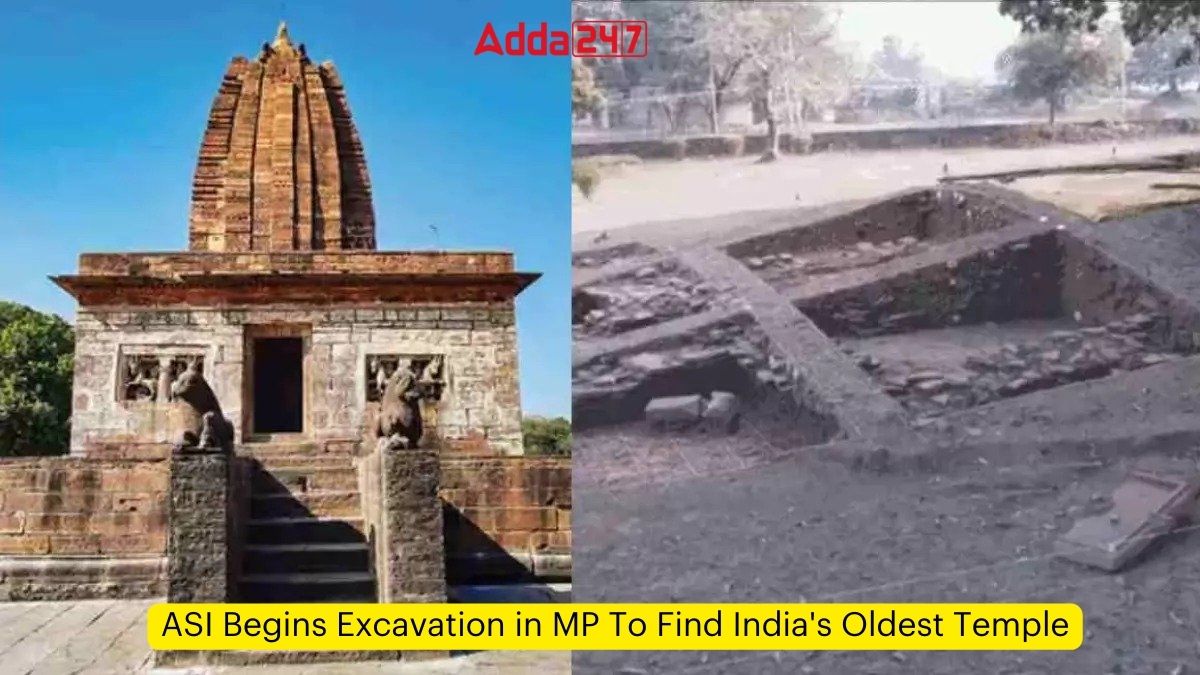The Archaeological Survey of India (ASI) is conducting excavations at two mounds in Nachne village, located in the Panna district of Madhya Pradesh. The goal of these excavations is to uncover what could potentially be the oldest temple in India.
Nearby Ancient Temples
The excavation sites are situated just 30 meters away from two ancient temples – a Gupta-era Parvati temple and the Chaumukh Nath temple built by the Kalachuri dynasty. These temples, known as the Nachna Hindu temples, are among the earliest surviving stone temples in central India, alongside those found in Bhumara and Deogarh.
While the exact date of the Nachna temples is uncertain, their architectural style is comparable to structures from the 5th or 6th-century Gupta Empire era. The Chaturmukh Temple, specifically, dates back to the 9th century and reflects the North Indian style of Hindu temple architecture.
Archaeologists’ Discoveries
Archaeologists believe that there is a historic site buried beneath the ground in Nachne village, and they are digging to uncover it. Dr. Shivakant Bajpai, the ASI’s Superintending Archaeologist, stated that Nachne village is an important archaeological location and houses a Parvati temple.
Madhya Pradesh is home to several ancient temples, including the ‘Sanchi 17’, a Gupta-period shrine considered to be the oldest complete surviving temple in India to date, dating back to the 5th century CE.
The Significance of Sanchi 17
Temple No. 17 at Sanchi serves as a prime example of the simplicity and grandeur of the Gupta period. This stunning temple features a modest, flat-roofed sanctum with a porch boasting four front pillars. The sanctum’s ceiling is slightly higher than the portico’s roof.
While the interior and exterior remain unadorned, the pillars are exquisitely carved with inverted lotuses, and the capital supporting the roof features small lions. As one of the earliest examples of temple architecture in India, Temple No. 17 holds great historical significance.
Remnants of the Past
Neighboring Temple No. 18 is believed to have been a stone-and-brick temple from the 2nd century CE, but little of its original structure remains. Although it dwarfs Temple No. 17 in size, much of its structure has been lost, with only the foundation and a handful of pillars remaining.
This Chaitya temple boasted a horseshoe-shaped plan and is thought to have housed a Stupa within its walls.
The excavations in Nachne village hold the potential to uncover invaluable insights into India’s ancient architectural and cultural heritage, further enriching our understanding of the country’s rich history.
Important takeaways for all competitive exams
- ASI Director General: Yadubir Singh Rawat;
- ASI Headquarters: New Delhi, India;
- ASI Established: 1861.




 Bhartiya Bhasha Utsav 2025: Celebrating ...
Bhartiya Bhasha Utsav 2025: Celebrating ...
 Starlink Internet: Revolutionising Globa...
Starlink Internet: Revolutionising Globa...
 Google 2025: Top Searches by Indian User...
Google 2025: Top Searches by Indian User...







